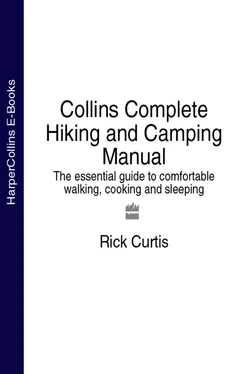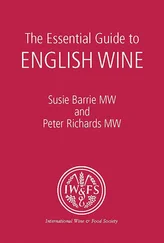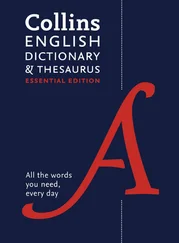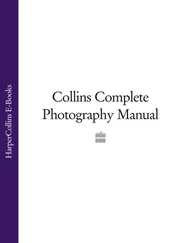Clothing Layers The number and type of layers you wear allow you to create sufficient dead air space for insulation and protection from external conditions (wind, rain, etc.). Extra layers may be added in the cooler hours of the morning or evening, or when your activity level drops, like at a lunch break.
Activity Level Increasing or decreasing your activity level increases or decreases the heat you generate.
Staying Dry An important factor in retaining heat is to minimize wetness, since you can lose heat 25 times faster in wet clothing than in dry. Moisture comes internally from perspiration generated by exercise or externally from rain or snow. You want clothing layers that minimize the buildup of moisture close to your skin and also protect you from external moisture.
Ventilation Opening up or closing the layers of your clothing allows you to decrease or increase heat loss as needed, without having to actually remove or add a layer. As you move, a bellows action occurs in clothing that pumps your accumulated warm air out through openings and pulls the cooler air in. In some conditions, this bellows action can reduce your body’s insulation by 50 percent or more, so unzip if you are too hot and zip up if you are cold. Ventilating also prevents moisture buildup from perspiration. Look for clothing that allows for easy ventilation, such as full-zip outer shell jackets, armpit zippers in shell jackets, zip-front turtle-necks, button-down shirts, and side-zip pants. Rolling up sleeves and pants legs is another way to ventilate.
THE CLOTHING LAYERS
The Base/Wicking Layer
The base/wicking layer keeps the skin dry and comfortable. This layer transports moisture from body perspiration away from the skin to the outside of the fabric. This layer should dry quickly. In cool weather, wear close-fitting layers to provide insulation. In warm weather, wear loose-fitting layers to maximize ventilation and absorption of moisture for the skin to keep cool and dry. There are a number of different ways to wick moisture away from your body:
Hydrophobic/Hydrophilic Fibers These are synthetic fibers often made of polyester or polypropylene that do not absorb water (as cotton does). They are extremely effective worn directly against the skin to keep it dry and reduce evaporative heat loss. In addition to not absorbing water, many of these fabrics are hydrophobic (“water-hating”) on the inside, so they push the water vapor from the area of highest concentration (next to your skin) to the outside of the fabric. Some fabrics are hydrophilic (“water-loving”) on the outside and pull the water outward. Others are bicomponent and use both a hydrophobic inner layer and a hydrophilic outer layer. The hydrophobic or hydrophilic nature is accomplished either by the physical characteristic of the fabric itself or by applying a chemical coating to the fabric. Examples: Capilene, Lifa, and Dryline.
Micro-channel Fibers These are synthetic fibers with tiny channels or capillaries within the individual fabric threads. These fabrics rely on what is known as “capillary action” to transport moisture through the channels from next to your skin to the outside of the fabric. Some fabrics are bicomponent with an inner layer of macrofiber yarn and an outer layer of microfiber yarn. The outer layer has a much greater surface area, which helps “pull” the water to the outside of the fabric. Examples: CoolMax and Polartec PowerDry.
Some of these fabrics have a definite “inside” and “outside.” If you wear a bicomponent garment inside out, you defeat the purpose of the garment. Garments that rely on the physical characteristics of the fabric itself rather than a chemical coating continue to function regardless of the number of times they are washed, while those that rely on a chemical treatment may eventually “wear out.” There are different thicknesses of these fabrics, generically called lightweight, medium weight, and heavy or expedition weight. The thicker fabrics offer great insulative value along with their wicking properties. Pro: Excellent inner layer. Minimizes moisture next to the body, where high conductive heat loss can occur. Con: Not windproof, so best used as an inner layer. Some fabrics retain odor more than others.
The Insulating Layers
The main purpose of the insulating layer is to create dead air space for insulation. It also absorbs some of the wicking layer’s moisture, keeping the moisture away from your skin, so you want it to easily pass moisture. Depending on the temperature this can be one layer or many layers.
First Layer Your first insulating layer is typically shirts and pants. This could be an extension of the wicking layer—for example, wearing middle-weight to expedition-weight polypropylene that both wicks and provides insulation. Layers that allow you to “open” and “close,” like zip-front turtlenecks or button-down shirts, allow for ventilation during periods of high heat-producing activity. Synthetics like polypropylene or Thermax work well in this layer.
Second Layer If you need more loft for insulation, add another insulating layer like synthetic fleece or wool pullovers, sweaters, jackets, and pants.
Outer Layer If it is really cold, you may need to add an even thicker layer like an insulated parka or pants. These typically have an outer and inner layer of fabric and either down or some synthetic insulating fill sandwiched in between. These layers are often worn at the beginning and end of the day in camp, when activity levels are low or in temperatures below freezing.
The Insulating Materials
Fleeceis a synthetic fabric often made of a plastic (polyester, polyolefin, polypropylene). It has a “fuzzy” 3-D quality that imitates a sheep’s fleece and gives it insulating properties. It remains warm when wet, does not absorb moisture, and dries very quickly. This material has an insulative capacity similar to that of wool. Fleece is manufactured in a variety of thicknesses, offering different amounts of loft and insulation and numerous layering possibilities. Some fleece garments are made from recycled plastics or with a middle wind-proof layer. Pro: Fleece is able to provide the equivalent warmth of wool at half the weight. Con: Fleece by itself has poor wind resistance and almost always requires an additional wind-resistant layer. Examples: Polartec 100, Polartec 200.

TRICKS OF THE TRAIL
Loose fill versus continuous fillInsulating fibers can either be loose fill, like down, or continuous fill, like Polarguard. Loose fills are made up of small individual fibers. In order to keep the fibers equally distributed throughout the sleeping bag or garment, the manufacturer has to sew in interior “walls” of fabric known as baffles to create individual compartments to hold the fill. This adds a lot to the manufacturing cost.
Continuous-fill fibers are made in large sheets that can be cut into the right shape and sewn directly into the sleeping bag or garment without baffles.
Woolderives its insulating quality from the elastic, three-dimensional wavy crimp in the fiber that traps air. Depending on the texture and thickness of the fabric, as much as 80 percent of wool cloth can be air. Wool can absorb a fair amount of moisture without imparting a damp feeling because the water “disappears” into the fiber spaces. Even with water in the fabric, wool retains some dead air space and will still insulate you. The disadvantage to wool is that it can absorb a lot of water, making it very heavy when wet. Maximum absorption can be as much as one-third the garment weight. Wool releases moisture slowly, with minimum chilling effect. Pro: Tightly woven wool is quite wind resistant. Wool clothing can often be purchased cheaply. Con: Wool garments can be heavy, take a long time to dry, and can be itchy against the skin. Some people are allergic.
Читать дальше













